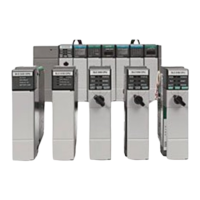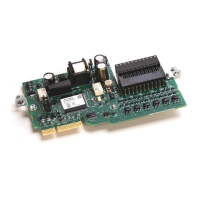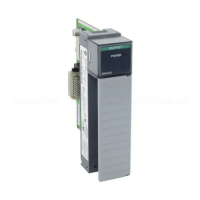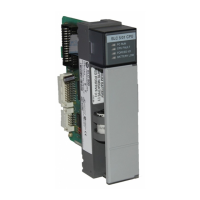Publication 1747-RM001G-EN-P - November 2008
Basic Instructions 2-3
Examine if Closed (XIC)
Use the XIC instruction in your ladder program to determine if a bit is On.
When the instruction is executed, if the bit addressed is on (1), then the
instruction is evaluated as true. When the instruction is executed, if the bit
addressed is off (0), then the instruction is evaluated as false.
Examples of devices that turn on or off include:
• a push button wired to an input (addressed as I:0/4).
• an output wired to a pilot light (addressed as O:0/2).
• a timer controlling a light (addressed as T4:3/DN).
Examine if Open (XIO)
Use the XIO instruction in your ladder program to determine if a bit is Off.
When the instruction is executed, if the bit addressed is off (0), then the
instruction is evaluated as true. When the instruction is executed, if the bit
addressed is on (1), then the instruction is evaluated as false.
Examples of devices that turn on or off include:
• motor overload normally closed (N.C.) wired to an input (I:0/10).
• an output wired to a pilot light (addressed as O:0/4).
• a timer controlling a light (addressed as T4:3/DN).
] [
Input Instruction
Fixed SLC
5/01
SLC
5/02
SLC
5/03
SLC
5/04
SLC
5/05
• •••••
Table 2.2 XIC Bit State
Bit Address State XIC Instruction
0False
1True
]/[
Input Instruction
Fixed SLC
5/01
SLC
5/02
SLC
5/03
SLC
5/04
SLC
5/05
• •••••
Table 2.3 XIO Bit State
Bit Address State XIO Instruction
0True
1False

